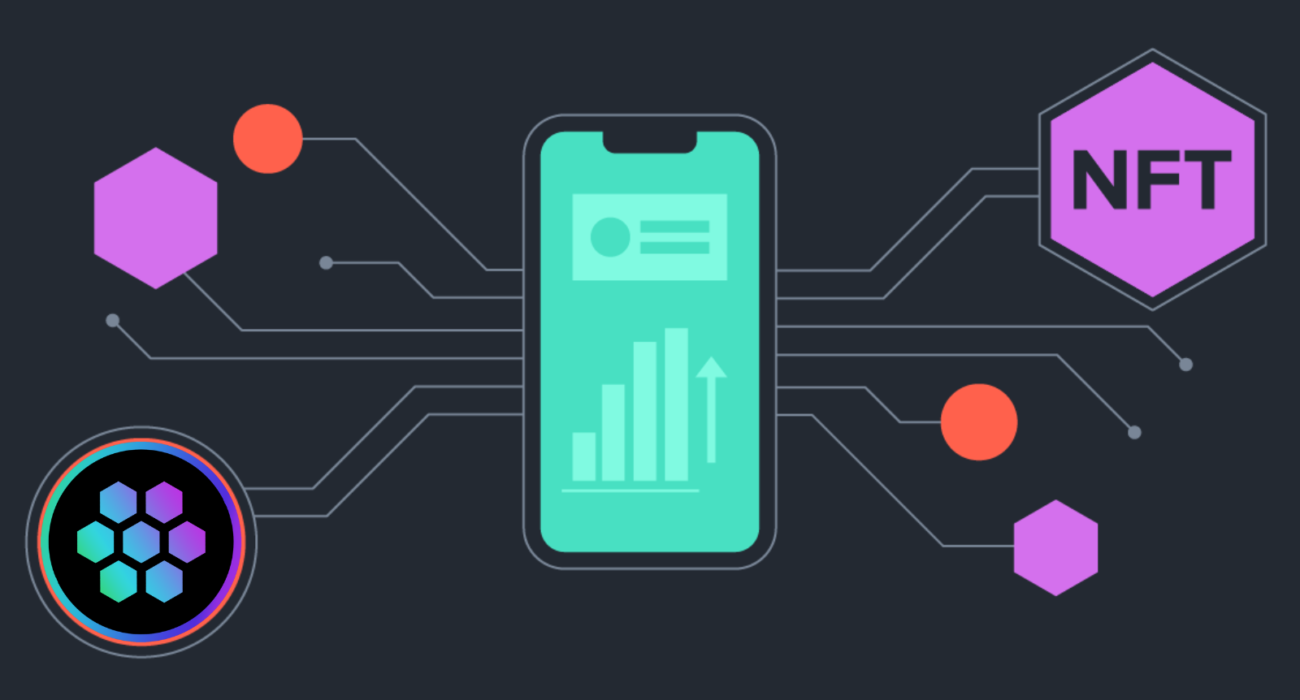Securing DePIN with SRP Coin. In the rapidly evolving world of digital currencies and decentralized networks, security is paramount. SRP Coin, a promising cryptocurrency, aims to enhance the security protocols of Decentralized Physical Infrastructure Networks (DePIN). In this Blog, we’ll explore how SRP Coin ensures security in the DePIN ecosystem, delving deep into its layered architecture, encryption mechanisms, and future enhancements.
Brief Overview of SRP Coin
SRP Coin is more than just a cryptocurrency—it’s a cornerstone of secure transactions and interactions within decentralized networks. As blockchain technology evolves, so do the security challenges. SRP Coin is designed to safeguard against these threats while empowering the DePIN network with advanced security protocols. By securing DePIN with SRP Coin, users can enjoy trustless, decentralized financial systems with robust security measures.
Importance of Security in Digital Assets
The digital landscape is increasingly susceptible to cyber threats, especially in decentralized environments. With DePIN networks relying on a distributed infrastructure, ensuring the safety and security of user data and transactions is crucial. SRP Coin’s advanced security protocols set a new standard for safeguarding digital assets, making it essential to understand how this coin enhances security across the decentralized ecosystem.
SRP Coin’s Security Architecture
Layered Security Approach
Securing DePIN with SRP Coin is achieved through a comprehensive, multi-layered security approach. Each layer works to protect the integrity of the network, ensuring no single point of failure. These layers include:
- Application Layer: Responsible for encrypting user data and transactions.
- Network Layer: Secures data transmission across nodes and prevents network-level attacks.
- Consensus Layer: Validates transactions, ensuring the integrity of the entire blockchain.
By utilizing this layered approach, SRP Coin fortifies DePIN from external threats and internal vulnerabilities.
Encryption Mechanisms
At the heart of SRP Coin’s security is encryption. Encryption protocols ensure that all sensitive data and transactions are safe from unauthorized access. Specifically, SRP Coin employs Advanced Encryption Standard (AES) to protect transaction data and Elliptic Curve Cryptography (ECC) for secure key exchanges.
Encryption isn’t just about safeguarding transactions; it’s also crucial for maintaining privacy. In a decentralized world like DePIN, ensuring that user data remains private is non-negotiable. SRP Coin’s encryption mechanisms act as a powerful shield, keeping information safe while ensuring smooth and secure transactions across the network.
Consensus Protocol
Blockchain security heavily depends on its consensus protocol. SRP Coin employs the Proof of Stake (PoS) mechanism, ensuring that only trustworthy participants validate transactions. Unlike Proof of Work (PoW), which is energy-intensive, PoS enhances security without compromising the efficiency of the network.
By staking SRP Coins, validators have a vested interest in maintaining the security and integrity of the network. This incentive system strengthens DePIN’s decentralized structure, making it harder for bad actors to compromise the network. The PoS consensus mechanism is one of the reasons why securing DePIN with SRP Coin is reliable and robust.
Authentication and Access Controls
Multi-Factor Authentication (MFA)
One of the key features that make SRP Coin stand out is its use of Multi-Factor Authentication (MFA). MFA adds an extra layer of security, requiring users to verify their identity through multiple methods—typically a password, a biometric scan, or an authentication token. This minimizes the risk of unauthorized access, ensuring only legitimate users can execute transactions or access sensitive data.
By securing DePIN with SRP Coin, users benefit from a secure authentication process that prevents fraudulent access and boosts the overall safety of their digital identity.
Role-Based Access Control (RBAC)
In addition to MFA, SRP Coin uses Role-Based Access Control (RBAC) to limit access based on user roles within the network. This ensures that only authorized individuals can perform specific actions. For example, a node operator may have higher-level access than a regular user, but both are restricted by their roles, reducing the potential for insider attacks.
RBAC strengthens the DePIN network by creating a structured access system that reduces the chances of unauthorized actions. It’s a critical part of how SRP Coin ensures data integrity and system security.
Smart Contract Security
Auditing and Verification
Smart contracts are fundamental to decentralized networks like DePIN, enabling automated processes and trustless transactions. However, they can be vulnerable to bugs or malicious attacks if not properly secured. SRP Coin prioritizes smart contract audits to verify their integrity and functionality.
Third-party auditing firms regularly review SRP Coin’s smart contracts to identify any vulnerabilities. These audits are crucial in ensuring the safety of transactions and preventing the exploitation of the network. By securing DePIN with SRP Coin, users are protected from smart contract vulnerabilities that could otherwise compromise their assets.
Prevention of Vulnerabilities
SRP Coin also takes proactive measures to prevent common smart contract vulnerabilities such as reentrancy attacks, overflow errors, and cross-site scripting. These security practices ensure that the smart contracts running on the DePIN network are not only efficient but also resilient against attacks.
By incorporating secure coding practices and regular updates, SRP Coin mitigates the risks associated with smart contract execution, making the entire DePIN network more secure and reliable.
Network Security Protocols
Distributed Ledger Technology (DLT)
DePIN relies on Distributed Ledger Technology (DLT) for its decentralized nature. Securing DePIN with SRP Coin involves leveraging the strengths of DLT to maintain a tamper-proof record of all transactions. DLT ensures that no single entity has control over the data, reducing the risk of central authority abuse or hacking.
The decentralized nature of the ledger means that even if one part of the network is compromised, the overall system remains secure. This enhances both the transparency and security of transactions within the DePIN network, with SRP Coin playing a pivotal role in this infrastructure.
DDoS Protection
One of the common attacks on decentralized networks is the Distributed Denial of Service (DDoS) attack, which can overwhelm the network with excessive traffic. SRP Coin’s security protocols include strong defenses against DDoS attacks, ensuring the network remains operational even under duress.
By securing DePIN with SRP Coin, users are protected from these disruptive attacks, ensuring uninterrupted access to the network and preventing malicious actors from disrupting services.
User Privacy and Data Protection
Anonymity and Confidentiality
In today’s world, privacy is a major concern, especially in decentralized networks. SRP Coin takes user privacy seriously, ensuring that all transactions maintain anonymity and confidentiality. With advanced encryption and privacy-focused protocols, SRP Coin guarantees that user data is never exposed to unauthorized parties.
Anonymity is a crucial aspect of securing DePIN with SRP Coin. Users can perform transactions without fear of being tracked or their personal information being leaked.
Compliance with Global Regulations
While ensuring user privacy, SRP Coin also complies with global data protection regulations such as GDPR (General Data Protection Regulation). This balance between privacy and regulatory compliance ensures that SRP Coin is not only secure but also a trustworthy platform for users worldwide.
Incident Response and Recovery
Monitoring and Alerts
Continuous monitoring is an essential part of securing DePIN with SRP Coin. The network uses advanced monitoring tools to detect any unusual activities or potential threats. When a potential security breach is detected, immediate alerts are sent to the network’s administrators, allowing for a swift response to mitigate the risk.
This real-time response capability ensures that SRP Coin remains resilient against cyberattacks, protecting user assets at all times.
Disaster Recovery Plan
In the unlikely event of a security breach or system failure, SRP Coin has a well-documented disaster recovery plan. This plan ensures that the network can quickly recover and continue operations without significant disruption.
By securing DePIN with SRP Coin, users can trust that their assets are safe even in the face of unforeseen disasters.
Future Enhancements in SRP Coin Security
Upcoming Security Features
The development of SRP Coin’s security features is ongoing. Future updates will introduce post-quantum cryptography, ensuring that SRP Coin remains secure even as computational threats evolve. This proactive approach keeps SRP Coin at the forefront of blockchain security.
Adapting to Emerging Threats
As cybersecurity threats become more sophisticated, SRP Coin is committed to evolving its security protocols. The team behind SRP Coin continuously researches and implements new technologies to stay ahead of potential vulnerabilities, ensuring the long-term security of the DePIN network.
Conclusion
Securing DePIN with SRP Coin is an ongoing effort to ensure that decentralized networks remain safe, efficient, and trustworthy. From layered security architectures to smart contract audits and strong privacy protocols, SRP Coin offers an unparalleled security framework for the DePIN network. As blockchain technology continues to grow, ensuring your digital assets are secure is more important than ever. SRP Coin’s cutting-edge security protocols make it a leader in the field. Consider investing in SRP Coin to be part of a secure, decentralized future, where privacy and security are top priorities.

 China
China Russia
Russia India
India









